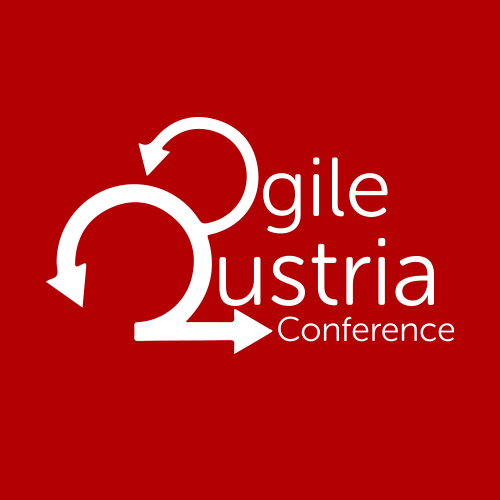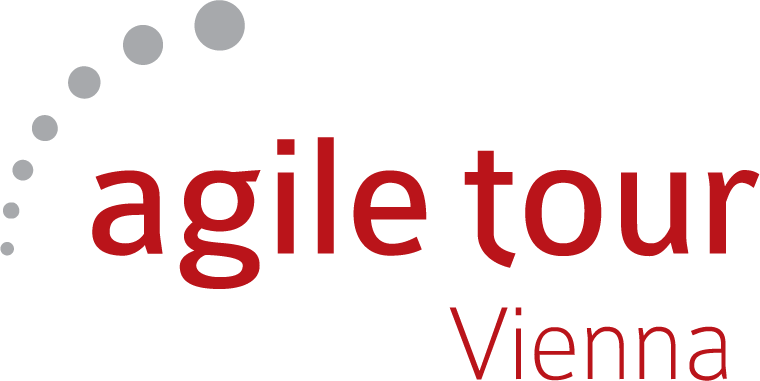-
- About Conference
- Venue
- Accomodation
-
Agile Prague in Years
- Agile Prague Conference 2024
- Agile Prague Conference 2023
- Agile Prague Conference 2022
- Agile Prague Conference 2019
- Agile Prague Conference 2018
- Agile Prague Conference 2017
- Agile Prague Conference 2016
- Agile Prague Conference 2015
- Agile Prague Conference 2014
- Agile Prague Conference 2013
- Agile Prague Conference 2012
- Agile Prague Conference 2011
- Speaking at Agile Prague Conference
- Prague Guide
-
News
- Join the Certified Designing Agile Organizations Workshop with Jurgen De Smet
- Join the ICAgile Professional Agile Coaching Certification Workshop with John Barratt
- Agile Prague 2025
- Agile Prague 2024
- Conference workshops 2024
- Attendee Information 2023
- September is an Agile month
- Conference workshops 2023
- 2024 program
- Looking for Speakers 2023
- Agile Coaching Workshop
- AgilePrague 2022
- Agile Prague Virtual Edition
- Online Program
- This year...
- Program & Videos
- In the meantime...
- 2023 program
- Photos 2019
- Agile Prague 2019 - Press release
- Agile Prague 2019 is sold out
- Design Thinking Workshop
- AgilePrague 2019 is looking for partners
- Videos 2019
- Registration
- AgilePrague in a Nutshell
- Lightning talks - your chance to share at Agile Prague Conference
- Agile Prague - Last Information
- Agile Prague 2018 - Press release
- Agile Prague 2018 is sold out
- Early bird registration for Agile Prague 2018 ends in two weeks
- Last week of early bird registration for Agile Prague 2018
- Open Space
- AgilePrague 2018 is looking for partners
- Registrations for AgilePrague 2018 are opened
- Discovery or Delivery
- Speakers 2018
- Marshmallow Madness with SEMrush! Official Agile Prague 2017 Afterparty
- Workshops venue
- Agile Prague 2017 - Last Information
- Agile Prague 2017 - Press release
- Agile Prague 2017 is almost sold out
- Preview of "Swearing, Nudity and Other Vulnerable Positions" talk
- Large-Scale Scrum: LEGO simulation!
- Pay 2 get 3 for Creative Storyboarding for Business workshop
- Earl bird registration ends in three days
- Early bird registration ends in one week
- Scaling is still hot topic
- Great support from Certified Scrum Trainers & Coaches and Scrum Alliance
- Coaches Clinic at Agile Prague
- About Creative Storyboarding for Business workshop
- Earl bird registration ends in less than two weeks
- Registration for Agile Prague conference is possible via Eventbrite as well
- Full Agile Prague Week 2017
- Speakers 2017
- Modern Agile Workshop
- Creative Storyboarding
- Conference workshop: Modern Agile by Joshua Kerievsky
- Conference workshop: Creative Storyboarding for Business by Stuart Young
- The first 15 registrations for super early bird price are sold out
- List of the speakers is still increasing
- Registration for 7th season is open
- Looking for Speakers 2017
- Agile Prague Conference 2016 is sold out!
- Agile Prague is almost sold out!
- Early Bird registrations till the end of June
- Program 2016
- Speakers 2016
- Looking for Speakers 2016
- Certified LeSS Practicioner
- Speakers Introduction
- Agile Prague is sold out
- Open Space Sessions
- AgilePrague is almost sold out
- Keynote Speakers 2015
- Registration opened
- Conference tutorial: Vasco Duarte #NoEstimates
- Registration and First Speakers
- Looking for Speakers 2015
- Speakers 2015
- Looking for Speakers 2018
- Looking for Speakers 2016
- Ohlédnutí za AgilePrague2014
- Photos 2014
- ICAgile Introduction
- Keynote Speakers 2014
- Pre-conference Tutorial: Sep12
- Conference tutorial Architecture with Agility - Kevlin Henney
- Registration
- Looking for Speakers 2014
- Looking for Speakers 2014
- Agile Prague 2014
- Videos 2013
- Last 20 Registrations
- Last information
- Program @ Touch Devices
- Keynote Speakers 2013
- Photos 2013
- Final Program for Agile Prague Conference 2013
- Registration
- Agile Prague 2013
- Videos 2012
- Keynote speakers 2012
- Party time - First 100 beers free!
- Workshops
- Tutorials 2013
- Location
- Speakers for Agile Prague
- Registration is Open
- Photos from the Conference 2011
- Conference Photos 2012
- Agile Prague 2012
- 15th best Agile conference
- World Cafe
- Videos 2011
- Registration
- Sponsors and Partners Details
- Program
- Call for Participation
- Contact
- About Conference
- Venue
- Accomodation
-
Agile Prague in Years
- Agile Prague Conference 2024
- Agile Prague Conference 2023
- Agile Prague Conference 2022
- Agile Prague Conference 2019
- Agile Prague Conference 2018
- Agile Prague Conference 2017
- Agile Prague Conference 2016
- Agile Prague Conference 2015
- Agile Prague Conference 2014
- Agile Prague Conference 2013
- Agile Prague Conference 2012
- Agile Prague Conference 2011
- Speaking at Agile Prague Conference
- Prague Guide
- News
Agile Prague 2025
The next year of Agile Prague Conference is going to be Sep 15-16, 2025.
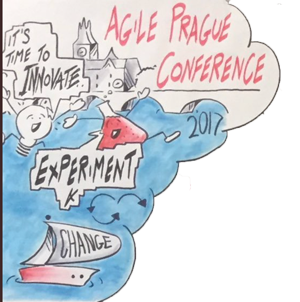
Join the Certified Designing Agile Organizations Workshop with Jurgen De Smet
Join a two-day Certified Designing Agile Organizations workshop on Sep 17-18 as a combo with the conference (Sep 15-16). The capacity is limited!
read more »Join the ICAgile Professional Agile Coaching Certification Workshop with John Barratt
Join a two-day ICAgile Professional Agile Coaching Certification workshop on Sep 17-18 as a combo with the conference (Sep 15-16). The capacity is limited!
read more »Open Space
Wouldn’t it be great to go to a conference that included all of the topics that are most interesting to you? A conference that addressed your most pressing questions?
That’s what the Open Space sessions are for. It’s the part of the conference that you get to design.
Join the lunch Open Space and deepen your learning experience.
read more »
J. B. Rainsberger: The Economics of Agile Software Development
by Anna Kulakowska
This brief introduction to the theory of constraint was an interesting perspective to look at agile methodology. The theory of constraints can be summarized with the following statement: ‘The chain is no stronger than its weakest link’.
When we think about our goal, there is always at least one constraint that is limiting our throughput. This constrain is often referred to as the bottleneck. The most common limiting factors are equipment, people, and policies. In every particular situation, we need to assess and find out:
- Where the bottlenecks are?
- Where work slows down?
- Which problems we need to fix first?
After we know where the bottlenecks are, we can come up with pretty good solutions. The most common ways to overcome the constraints are:
- Limiting the amount of work that goes to the bottleneck
- Diverting the work away from the bottleneck
- Increasing the limitation of bottleneck (buying systems, hiring people)
Agile methodology can be also used to reduce the cost of failure in a number of ways:
- Faster feedback
- Increasing flow of information
- Decreasing the risk of one person failing
- Reducing the complication
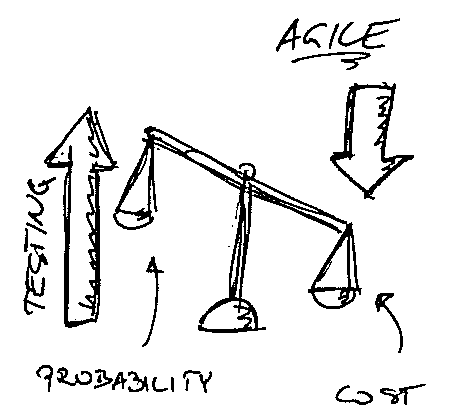
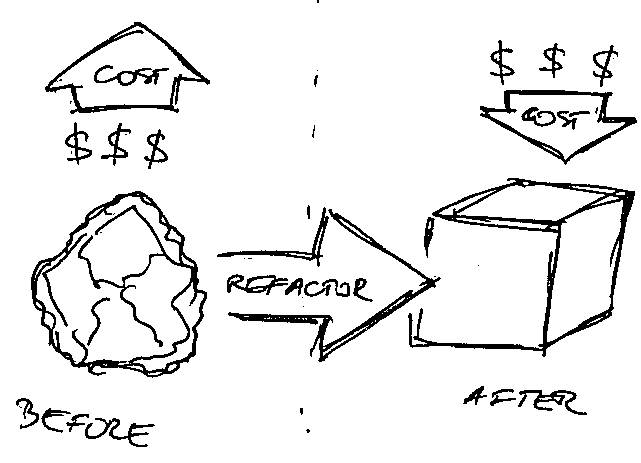
The graphics were created by Richard Fridrich.
© 2012-2012, Agile Prague Conference
agile methods, agile adoption, agile in management, agile coaching
Important links
Home
Registration
Sponsors and Partners Details
Program
Call for Participation
Contact
Important links
Made by
















